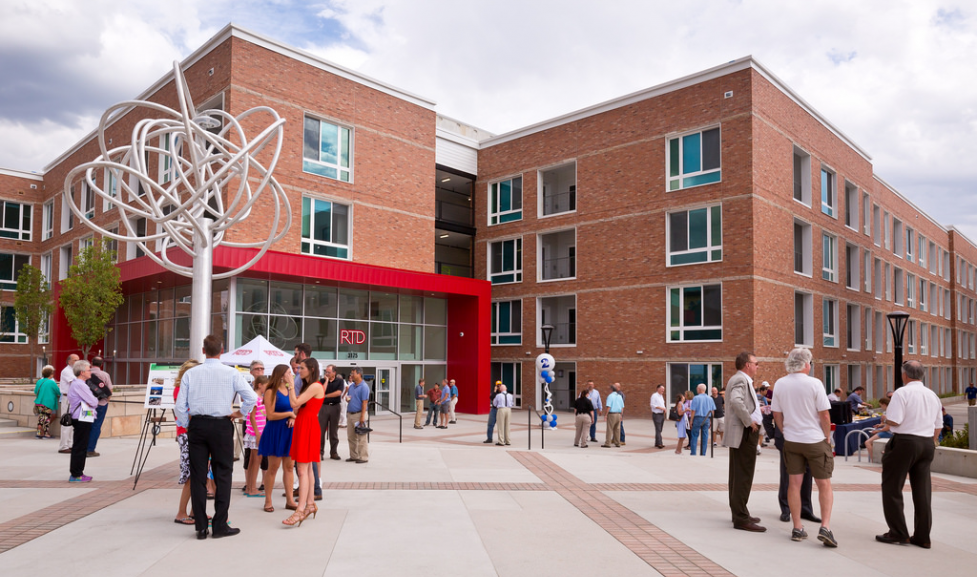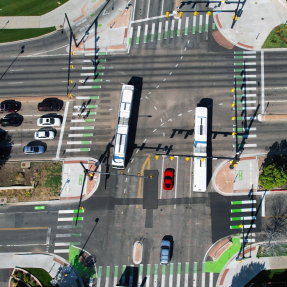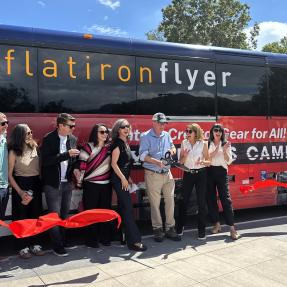Project Overview
The goal of Boulder Junction is to create a mixed-use, pedestrian-oriented place where people will live, work, shop and have access to both local and regional transit. The Transit Village Area Plan guides long-term development at Boulder Junction. The plan is the collective work of the City of Boulder, private property owners, and the Regional Transportation Division (RTD).
Boulder Junction is a Transit-Oriented Development (TOD). Several principles of TOD such as increased density, parking maximums, and unbundled parking for residents are employed to ensure that development falls within the goals of the Transit Village Area Plan. The RTD station located below the Depot Square apartments at Boulder Junction will serve as the hub of transit at the site.
Performance at Boulder Junction is tracked through a Trip Generation Allowance, an ordinance that states how many trips can be generated by the properties at peak hours.



